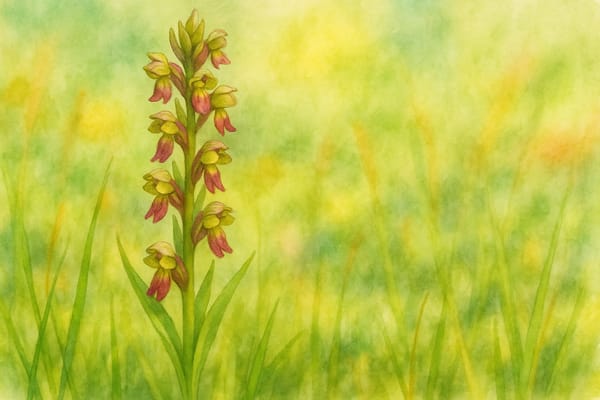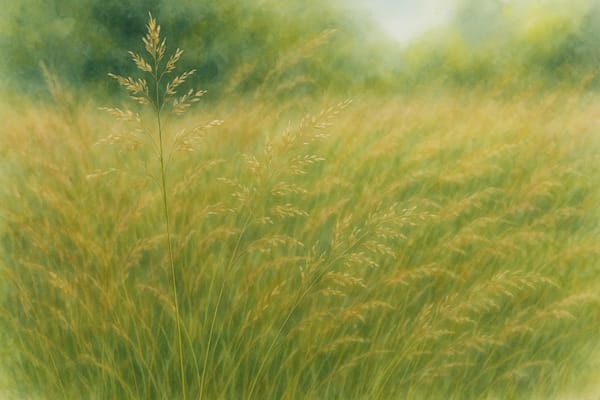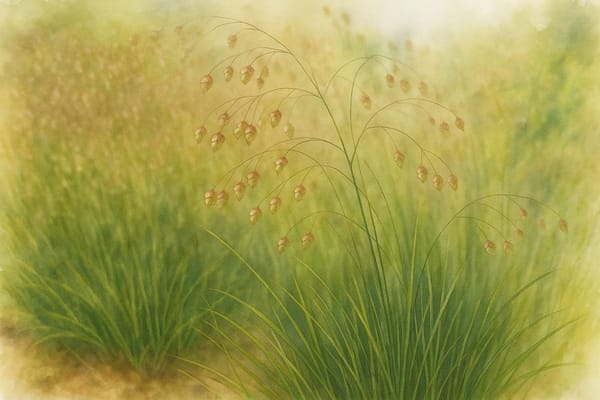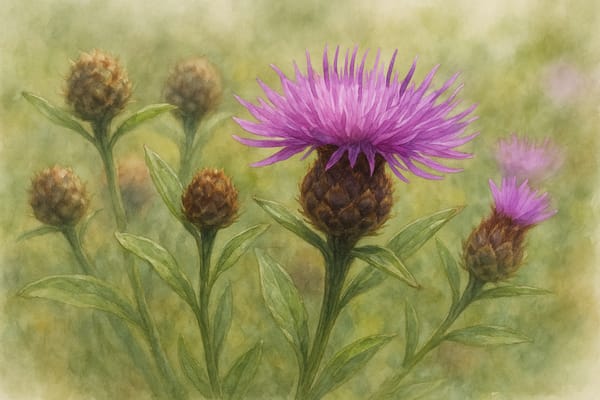An Elusive Jewel of Cornwall’s Grasslands
Historical and Cultural Significance
The frog orchid (Dactylorhiza viridis, formerly Coeloglossum viride) is a shy and subtle wildflower native to the UK, including parts of Cornwall. Rare and often overlooked, this small green-brown orchid is an important emblem of ancient grasslands and traditional grazing landscapes.
- Folkloric Origins: Its name derives from the flower’s frog-like appearance—greenish, squat, and slightly contorted—but it has little presence in folk tales, unlike many of its showier relatives.
- Grazing Heritage: Frog orchids once thrived along sheep droves and pasturelands, benefiting from short turf and light disturbance. Their decline mirrors the loss of traditional grazing and unimproved grasslands across Britain.
- Symbol of Rarity: Now classed as Vulnerable in the UK, the frog orchid is a conservation priority and an indicator of biodiversity-rich, low-nutrient habitats. In Cornwall, it survives in select locations on the Lizard Peninsula and Bodmin Moor.
- Quiet Ecological Importance: Despite its inconspicuous appearance, the frog orchid plays a vital role in maintaining species diversity in coastal calcareous grasslands.
Growing and Caring for Frog Orchid in Coastal Gardens
Though challenging to grow outside of specialist settings, the frog orchid offers committed gardeners a way to reintroduce heritage species and support conservation efforts in carefully managed settings.
Ideal Growing Conditions
| Factor | Recommendation |
|---|
| Light | Full sun to light shade |
| Soil | Poor, well-drained, calcareous or sandy soil |
| pH | Neutral to alkaline |
| Moisture | Moist during establishment; drought-tolerant once mature |
| Exposure | Hardy and tolerant of wind and salt; ideal for exposed coastal gardens |
| Fertility | Avoid rich soil and fertilisers; thrives in low-nutrient environments |
Care Tips for Success
- Soil Selection: Choose nutrient-poor, chalky, or sandy soil. Enriched or compacted soils should be avoided.
- Positioning: Locate in naturalistic meadows, sunny verges, or low-competition sites. Mimic grazing conditions with annual mowing or controlled grazing.
- Watering: Keep moist when young. Once established, frog orchids are surprisingly tolerant of dry conditions.
- Propagation Challenges: Growing from seed is possible but requires symbiotic soil fungi (mycorrhizae) to germinate—making it a difficult candidate for beginners.
- Minimal Disturbance: Avoid transplanting, deep digging, or soil disruption once established. Leave fallen plant matter as part of the natural cycle.
Ecological Benefits
- Biodiversity Indicator: Presence of frog orchids indicates a healthy, unimproved grassland with high conservation value.
- Pollinator Support: Although its flowers are small, the frog orchid attracts specialist pollinators and plays a role in ecological food webs.
- Naturalistic Value: Perfect for rewilded spaces, wildlife corridors, or coastal meadows where subtle native beauty is preferred over ornamental planting.
Quick Reference Summary: Frog Orchid at a Glance
| Aspect | Details |
|---|
| Cultural Significance | Linked to grazing heritage; conservation emblem |
| Soil | Poor, well-drained, chalky or sandy |
| Sunlight | Full sun to light shade |
| Exposure | Wind- and salt-tolerant |
| Wildlife Value | Pollinator support; biodiversity indicator |
| Garden Use | Wildflower meadows, naturalistic rewilding, calcareous banks |
| Maintenance | Minimal; avoid fertiliser, encourage short turf through mowing |
Final Note
Delicate and easily missed, the frog orchid whispers rather than shouts. For those who spot it—whether in a Cornish meadow or a carefully curated coastal garden—it represents a deeper connection to the land, a rare glimpse of botanical resilience, and a chance to steward a fading legacy.











